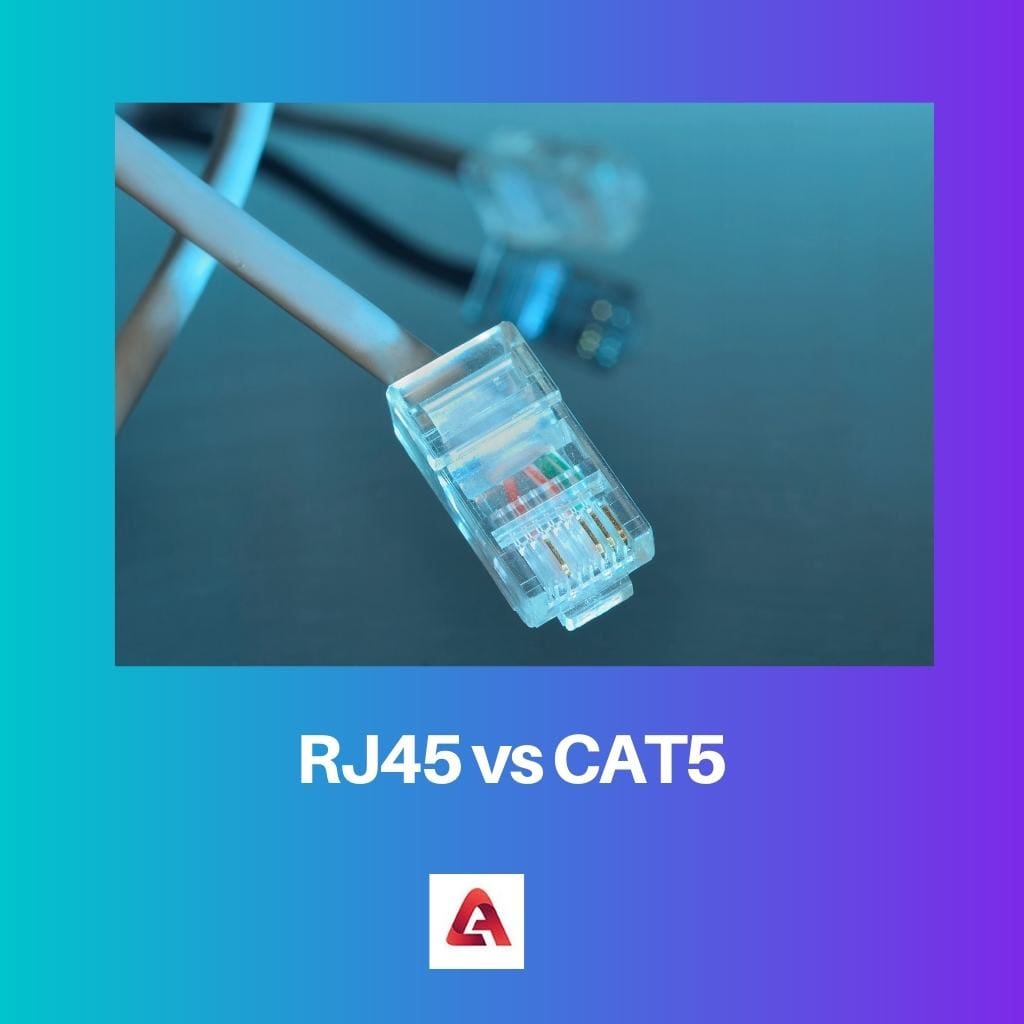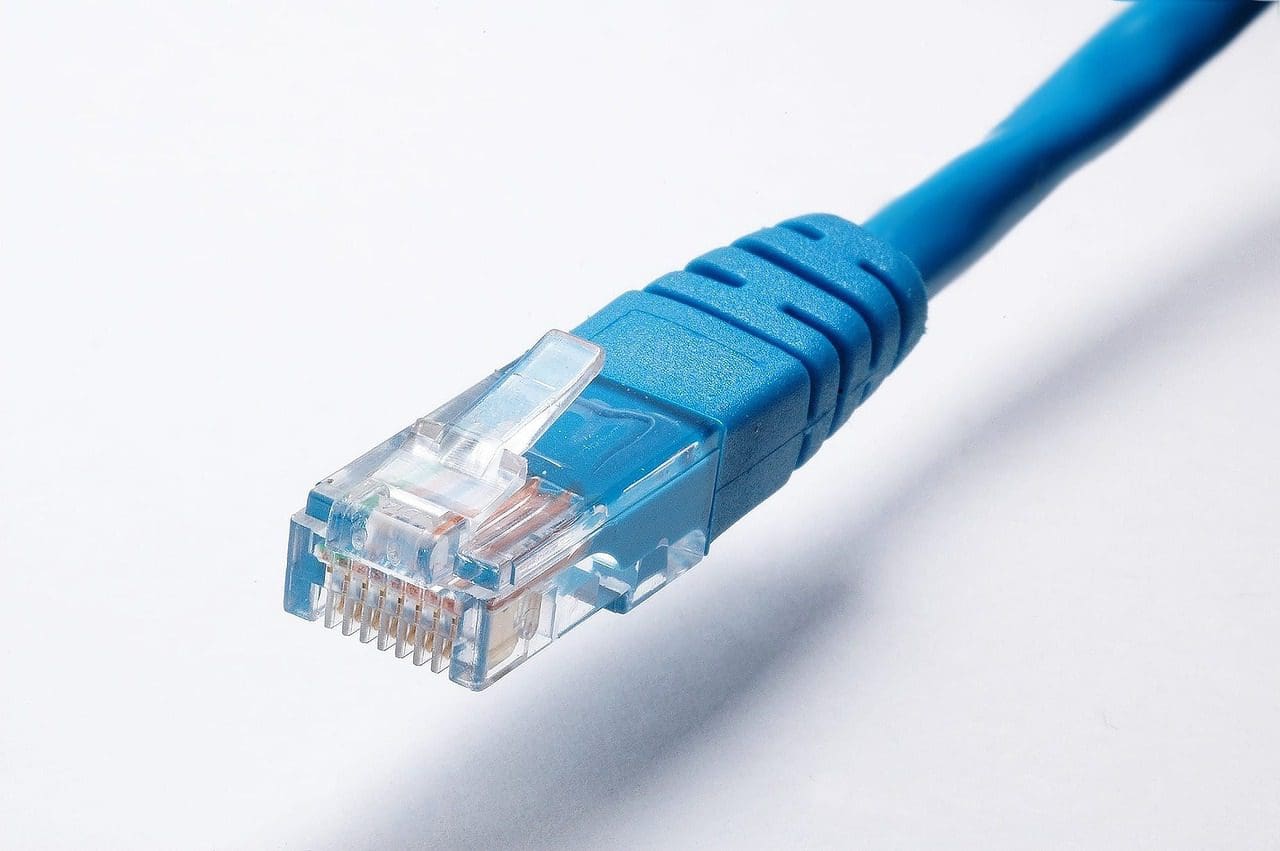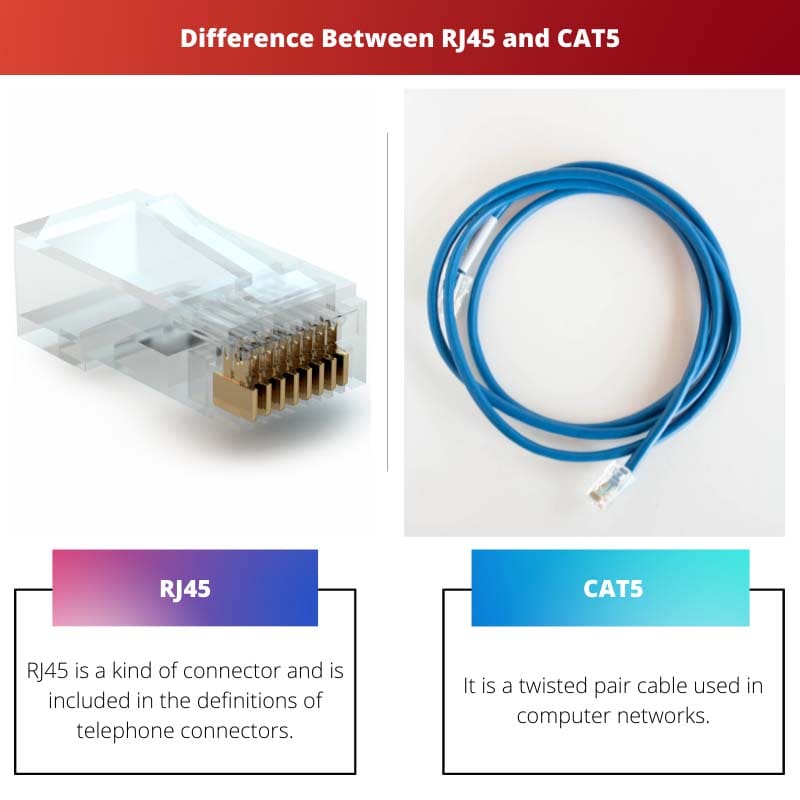Modern-day means modern technology and modern technology means a rapid increase in various electrical demands. The different digital needs require new items now and then.
The words RJ45 and CAT5 belong to the world of cables. These are sometimes confused with being synonymous, but in reality, these are two different items with different functions.
Key Takeaways
- RJ45 is a type of connector used for Ethernet networking cables, while Cat5 is used for Ethernet networking.
- RJ45 connectors have eight pins and are used for terminating twisted-pair network cables, while Cat5 cables contain four pairs of twisted copper wires and transmit data between devices.
- RJ45 connectors can be used with different types of Ethernet cables, including Cat5, Cat5e, and Cat6. Cat5 cables can only be used with RJ45 connectors and not other types.
RJ45 vs CAT5
The difference between RJ45 and CAT5 is that RJ45 means electrical interconnection standards that is a connector, whereas CAT5 is a standard related to ethernet cables. CAT5 is easily replaceable, which makes managing them more manageable. In contrast, replacing RJ45 is difficult.

RJ45 gets their name from the abbreviation “RJ”, meaning registered jack. Its functions have changed and got better with time. It is a type of telephone connector. They are very commonly used for the ethernet networking.RJ45 cables are capable of working in short as well as long distances. It consists of 8 colours of wires with eight different pins.
CAT5 cables stand for category 5 cables. This cable type is a twisted pair of cables used in computer networking. It is widely used for office home purposes. These are further divided into two types, i.e. stranded CAT5 and solid CAT5 cables.
Comparison Table
| Parameters of Comparison | RJ45 | CAT5 |
|---|---|---|
| Definition | RJ45 is a kind of connector included in telephone connectors’ definitions. | It is a twisted pair cable used in computer networks. |
| Uses | It is used to control how the cables are wired to the end. | It controls the maximum speed one can achieve with the cable wires. |
| Appearance | It contains eight different coloured wires and 8 pins. | It contains four twisted colour-coded cables. |
| Fields | The hardware manufacturers use it. | It is used by people all around the world for various purposes. |
| Management | Difficult to manage. | Easy to manage. |
What is RJ45?
RJ45 originates from the abbreviation “RJ”, which means registered jack. In the beginning, it provided an interconnecting standard for telecommunication.
However, its functions have changed with time, and now it is used in computer networking. RJ45 is a kind of connector included in telephone connectors’ definitions.
It is, however, slightly wider than the telephone plugs.
RJ45 connectors are used for ethernet networking. Ethernet cables can also be called RJ45 cables, as they have an RJ45 connector on each end.
These connectors have eight coloured wires and 8different pins. Out of these, four wires are solid colours, whereas the other four are striped.
T568A and T568B are the two wiring schemes used to terminate the twisted pair cable onto the connector interface. RJ45 is workable for short as well as long distances.
Along with ethernet protocol, they are even practical for ATM and serial ISDN T-1 and E-1.
In an internet interface, only four out of the 8 EJ45 wires participate in the communication process. Whereas the 1st and 2nd pins are used for data, pin 3rd and 4th pins are used for data received.
However, in serial ISDN protocols, all pins participate in the communication. It can be used for direct node-to-node connections without a router, switch or hub.

What is CAT5?
CAT5 stands for category 5 cable, a twisted pair cable used in computer networks. This cable has four twisted-pair of insulated copper wires and is terminated by an RJ45 connector.
It is also known as Ethernet, LAN, and category 5 cables. CAT5 cable is widely used in offices as well as home networks. It provides up to 100 MBps of data transmission.
This cable is recommended to have a maximum length of 100 meters as a length more than this without proper aid can create various network issues.
T568A and T568B are two of the standards that are for the order of this wire. CAT5 can carry telephony and video.
The modular connector and the punch-down blocks are used to connect the CAT5 cable.
There are mainly two types of CAT5 cables, i.e. the standard CAT5 cable and the solid CAT5 cable. Standard CAT5 is designed to be practical for short-distance ranges.
Solid CAT5, on the other hand, is intended to be functional for longer distance ranges such as data centres, office buildings etc.
CAT5 cables are connected to the end of the devices like laptops, switches, routers, etc., with the help of connections.

Difference Between RJ45 and CAT5
- RJ45 is a type of connector which provides for the arrangement of wires at the end of a cable. In comparison, CAT5 is a standard related to the ethernet cable.
- RJ45 controls how the cables are wired to the end; however, CAT5 controls the maximum speed one can achieve with the cable wires.
- CAT5 is quite easily replaceable and hence making its management more effortless. At the same time, RJ45 is more challenging to replace.
- Regarding appearance, RJ45 has eight different coloured wires and 8 pins. At the same time, CAT5 contains four twisted colour-coded cables with a maximum length of 100 meters.
- CAT5 cables are being used by people worldwide for various purposes. In contrast, RJ45 is used in the world by hardware manufacturers.





